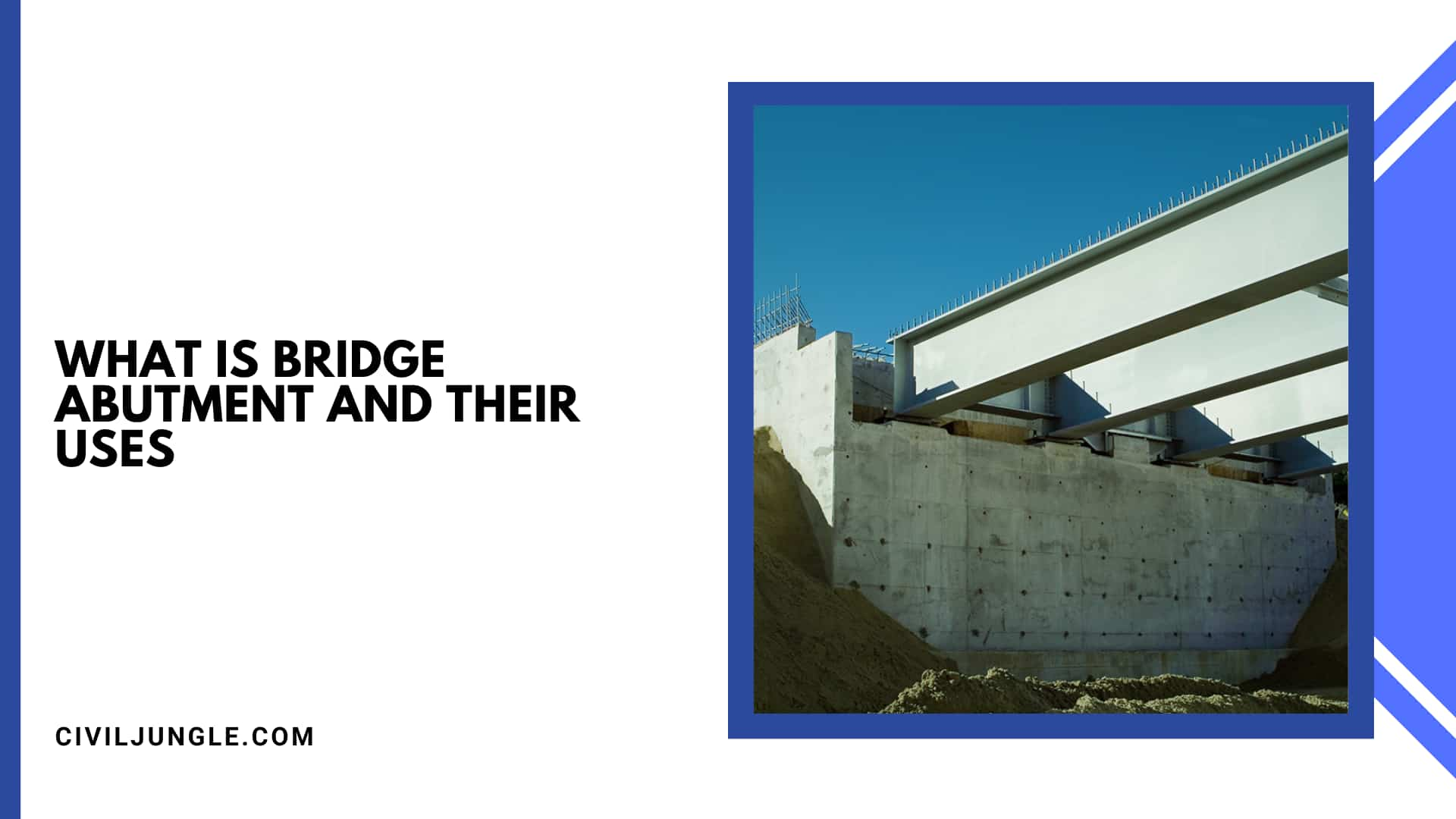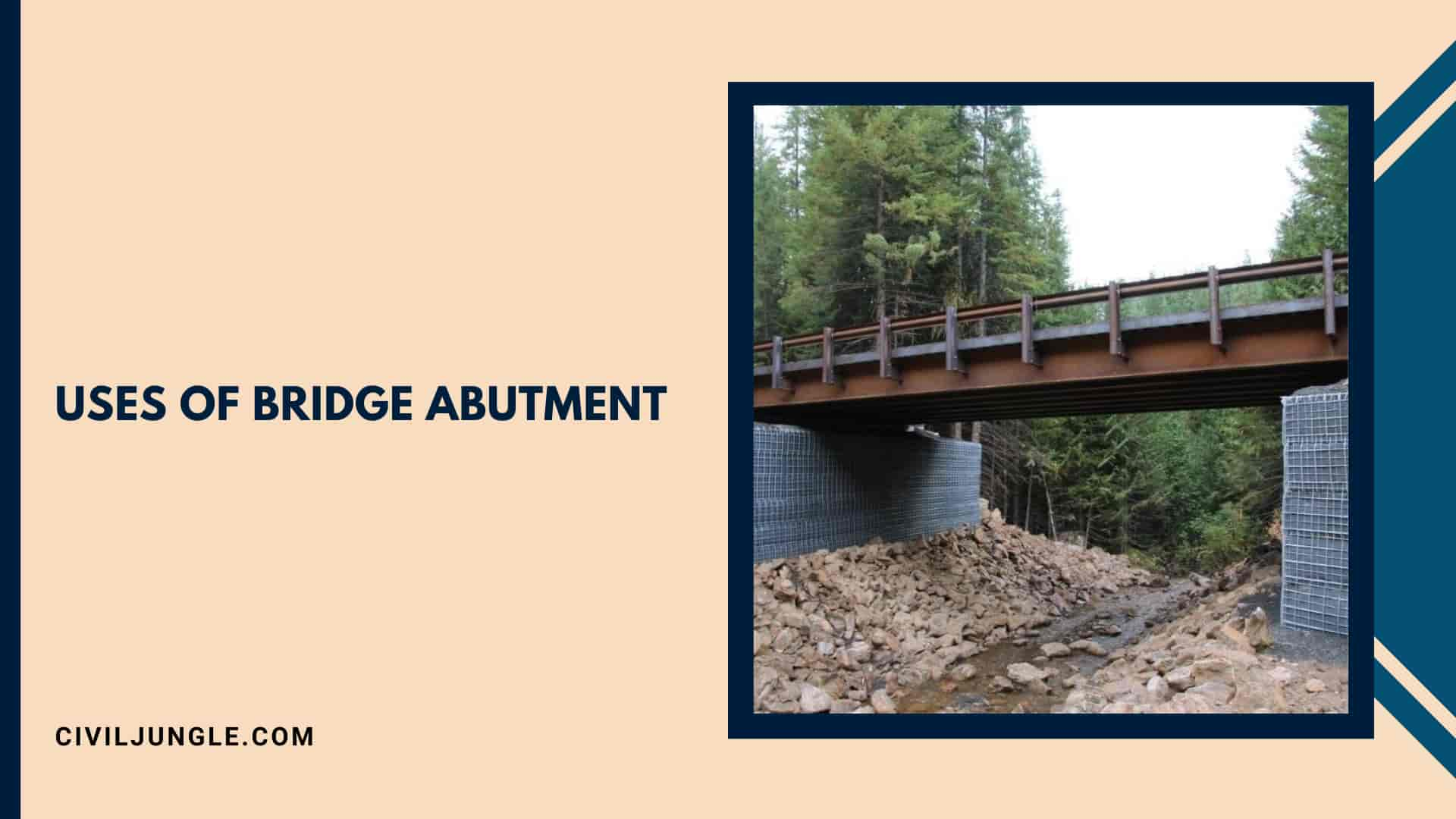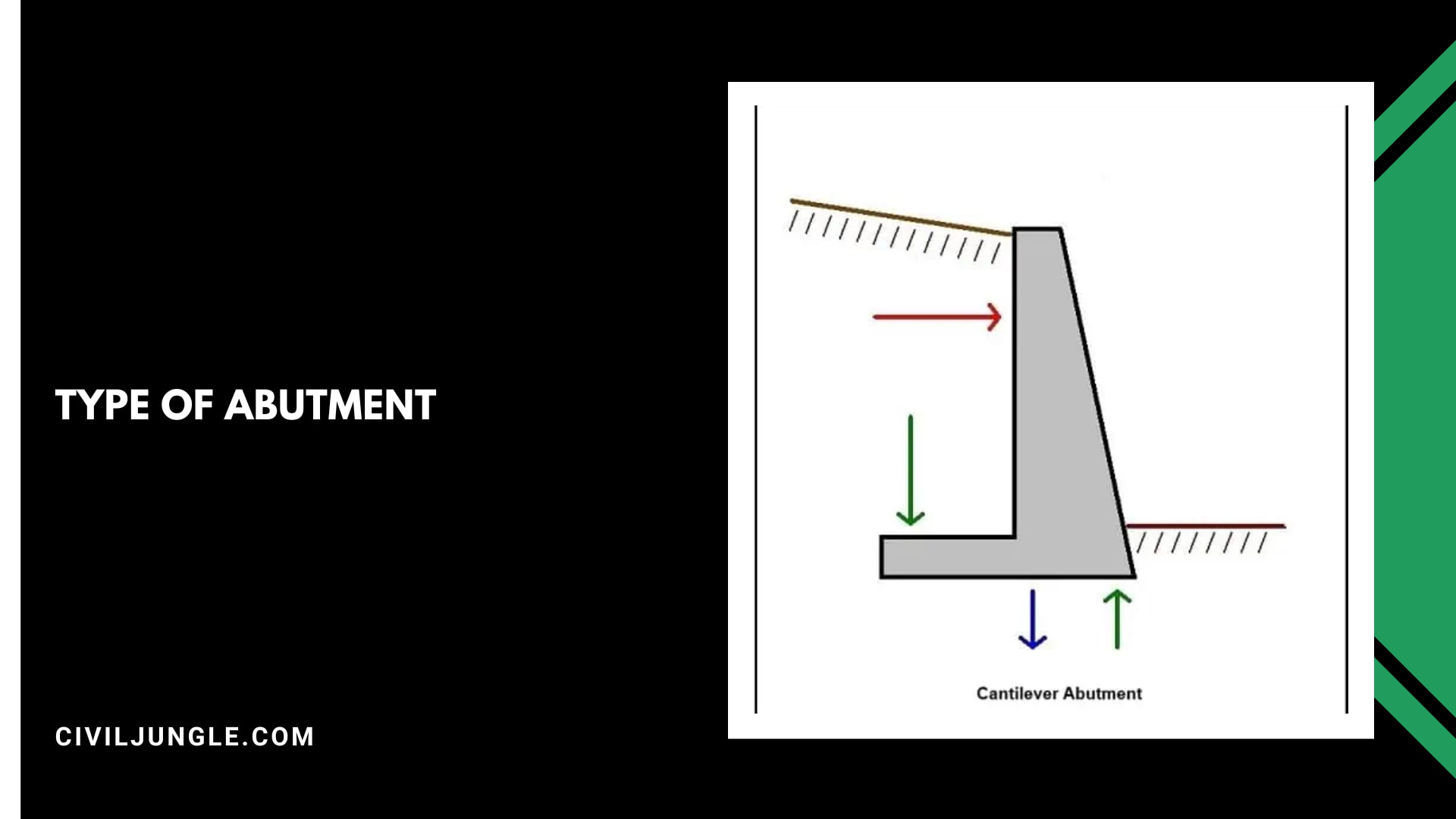Bridge Abutment Means
Important Point
Bridge abutments serve to connect the deck or bridge surface to the ground at each end of the bridge. Supports the weight of the bridge horizontally and vertically by abutment.
On a short bridge, the abutment is placed as support on both ends of the bridge. , Sometimes a retaining wall is also formed with the abutment in the bridge.
The load of the bridge deck is transferred to the ground by abutments. The abutment is vertically placed in the heavy foundation. The number of abutments depends on the length of the bridge.
Due to the flow of water and the pressure coming from the soil, it survives due to the weight of the bridge.
Also Read: What Is Parapet Wall And Their Types
What Is Bridge Abutment?
A bridge abutment is important at the end of the bridge, which supports the bridge’s superstructure. In addition.
It provides stability to the bridge through the abutment and connects to the ground-level road. The filling material provides support for the bridge path.
The abutment in the bridge is used according to the site location and the purpose of the requirement. There are different types of abutments.
The use of abutment is chosen to keep in view the economic point of view and its type according to the site location.
Uses of Bridge Abutment
- Using the bridge abutment, it transfers the load on the bridge and the wind load from its self-dead weight to the ground.
- The use of an abutment helps to make a safe landing by supporting one edge of the approach slab.
- The abutment is used to transfer load from the superstructure to its base components.
- Abutments are used in arch bridges to provide stability between vertical and horizontal force elements.
Components of Bridge Abutment
The abutment consists of various structural elements. The abutments placed on both sides of the bridge include the following components:
1. Bridge Seat
The top part of the abutment is called the place where the bridge deck abutment is supported. This component is called the bridge seat.
2. Wing Wall
This component of the abutment is for embankment only. Which helps the bridge maintain a side slope embankment. In addition, it prevents embankment from erosion through short retaining walls.
3. Back Wall
Back walls are used to support embankment in bridge abutment. The side walls are built vertically at the edge of the bridge according to the slope of the embankment. The back walls serve to support the extension joints of the bridge deck.
4. Pile of the Abutment
The pile is the main part of the abutment. Which connects the base of the abutment to the seat of the bridge.
The depth of the pile is determined based on the height of the bridge and the depth of the barrier (flow, river, and canal).
5. Footing of the Abutment
The foundation of the abutment is called the foundation of a bridge. The foundation connects to the ground through piles.
The footing of the abutment is fixed on a series of piles. Its purpose is to provide stability to abutments on the ground surface.
Also Read: What Is Hydraulic Cement And Their Uses
Type of Abutment
1. Gravity Abutment
The foundation of this type of abutment is very heavy and large. The dead weight of this type of abutment is able to withstand water pressure and Earth pressure.
The structure of the gravity abutment is placed directly on the ground. Due to its weight, the gravitational force of the earth keeps it on the ground.
2. Cantilever Wall Abutments
The cantilever abutment is used for two purposes. One is to support the ground behind the bridge, and the other is to support the bridge superstructure. These abutments should be made as short as possible as the filling material is installed on top of them.
3. U-Shaped Gravity Abutments
This type of bridge has a wing-like shape perpendicular to the landing path, which acts as support-forts. This type of abutment has very stability.
The wing walls of the abutment are shaped at a 90-degree angle to the seat of the bridge. A pair of piles are at equal distances in the foundation of a U-shaped abutment. On which the abutment transfers its load.
These types of abutments are mostly made of reinforced cement concrete. The bottom of this abutment is connected to each other by means of the base of the pile. The pile of the abutment is usually the foot of the abutment.
4. Full Height Abutments
This type of abutment is usually performed in metropolitan areas. The height of this type of abutment is higher.
It is constructed on a lower-level road. So that the whole embankment gets support, this type of structure is a very critical type.
5. Stub Abutments
This type of abutment is usually supported by a pile. At the bottom of this type of abutment, embankments are short constructed abutments. They are not very high above ground level.
Stub abutments generally retain the filling material of the bridge, the thickness of which is slightly greater than the thickness of the superstructure. Stub abutments can be economical in cost.
6. Semi-Stub Abutments
Usually, the height of the half-stub abutment is between the full height and the height of the stub abutment.
This type of abutment is constructed at the top of the embankment, unlike stub abutments. This type of abutment is constructed from the bottom of the abutment to the full height.
7. Counterfort Abutment
That counterfort abutment acts like a counterfort retaining wall. In the counterfort abutment, a thin wall called the main counterfort connects the wall to the footing. These counterfort walls are built at regular intervals.
The main purpose of counterfort abutment is to reduce the shear force and bending force imposed on the wall by the clay.
8. Spill-Through Abutments
Spill-through abutments are short stub-type abutments. This type of abutment is supported on pedestals or columns extending to the natural ground. This type of abutment, like closed abutments, must be constructed prior to construction.
The main purpose of spill-through abutments is to install large voids in the stem. So that the proportion of ground pressure on the abutment can be reduced.
9. Mechanically Stabilized Abutment
Mechanically fixed walls are used as bridge abutments. The bridge seat and footing are supported directly on the reinforced backfill, as shown in the figure above. Design concepts for mechanically stable walls increase abutment load reinforcement requirements.
These types of abutments are an economical alternative to mechanically deep bases or soft bases. This abutment can tolerate major distortions.
This type of abutment was used sparingly for the Moselle River bridge at Thionville, France.
Also Read: What Is the Strongest Foundation for a House And Their Types
10. Pile Bent Abutments
Pile bent abutment is a type of spill-through abutment. In these types of abutments, the wall-like support holds the support beam by a series of piles.
Like this post? Share it with your friends!
Suggested Read –
- Types of Columns Used in Construction
- What Is a Skeleton Frame And Their Uses
- What Is Butterfly Roof And Thier Pros and Cons
- What Is Metal Roof Insulation And Their Options
- Difference Between One Way Slab and Two Way Slab
What Is a Bridge Abutment and Why Is It Important?
A bridge abutment is a crucial component at the ends of a bridge that supports the bridge’s superstructure and connects it to the ground-level road. It provides stability and transfers loads from the bridge to the ground.
What Are the Components of a Bridge Abutment?
The components of a bridge abutment typically include the bridge seat (top part supporting the bridge deck), wing walls (maintaining embankment side slope), back walls (supporting extension joints), piles (connecting base to bridge seat), and footings (providing stability on the ground).
What Are the Types of Bridge Abutments?
There are several types of bridge abutments, including gravity abutments (heavy and large foundation), cantilever wall abutments (short and supporting ground and superstructure), U-shaped gravity abutments (wing-like shape for stability), full height abutments (higher and critical), stub abutments (short and economical), semi-stub abutments (between full height and stub), counterfort abutments (reduce shear and bending forces), spill-through abutments (short with large voids), mechanically stabilized abutments (reinforced backfill), and pile bent abutments (piles supporting beam).





Leave a Reply